The Celebration of the heritage that narrates Parisian history by Neri & Hu, the Papi Restaurant
Nestled in the Grands Boulevards district of Paris' 9th arrondissement, Papi is the latest brainchild of up-and-coming restaurateur Etienne Ryckeboer his debut seafood bar Bulot Bulot. This time, he teams up with Neri&Hu to rehaul the façade and interior space, and with talented Japanese chef Akira Sugiura to serve a seasonal menu of modern Italian dishes.
Located on the ground floor of a typical late 19th century Haussmann building, Neri&Hu's design concept celebrates the layered material heritage that narrates Parisian history.
Nestled in the Grands Boulevards district of Paris' 9th arrondissement, Papi is the latest brainchild of up-and-coming restaurateur Etienne Ryckeboer his debut seafood bar Bulot Bulot. This time, he teams up with Neri&Hu to rehaul the façade and interior space, and with talented Japanese chef Akira Sugiura to serve a seasonal menu of modern Italian dishes.
Located on the ground floor of a typical late 19th century Haussmann building, Neri&Hu's design concept celebrates the layered material heritage that narrates Parisian history. During the dismantling phase, the existing site was treated carefully; by stripping back the strata of finishes built up through the decades, the raw materials' beauty is revealed. Every single element was meticulously examined, and the challenge was to resist the urge to fix every imperfection, instead, honour the imprint oft of time upon each surface. Within the interior, portions of the old limestone and brick walls, a raw steel column, and a brick column are preserved and integrated into the design. On the façade, an existing steel I-beam lintel is featured, while a segment of the old stone moulding by the entry is left exposed, stitching the façade seamlessly to the neighboring building. Each fragment neighbouring ants a different period in Paris' history, forming a beautiful yet imposing canvas for the architects to add their new strokes.
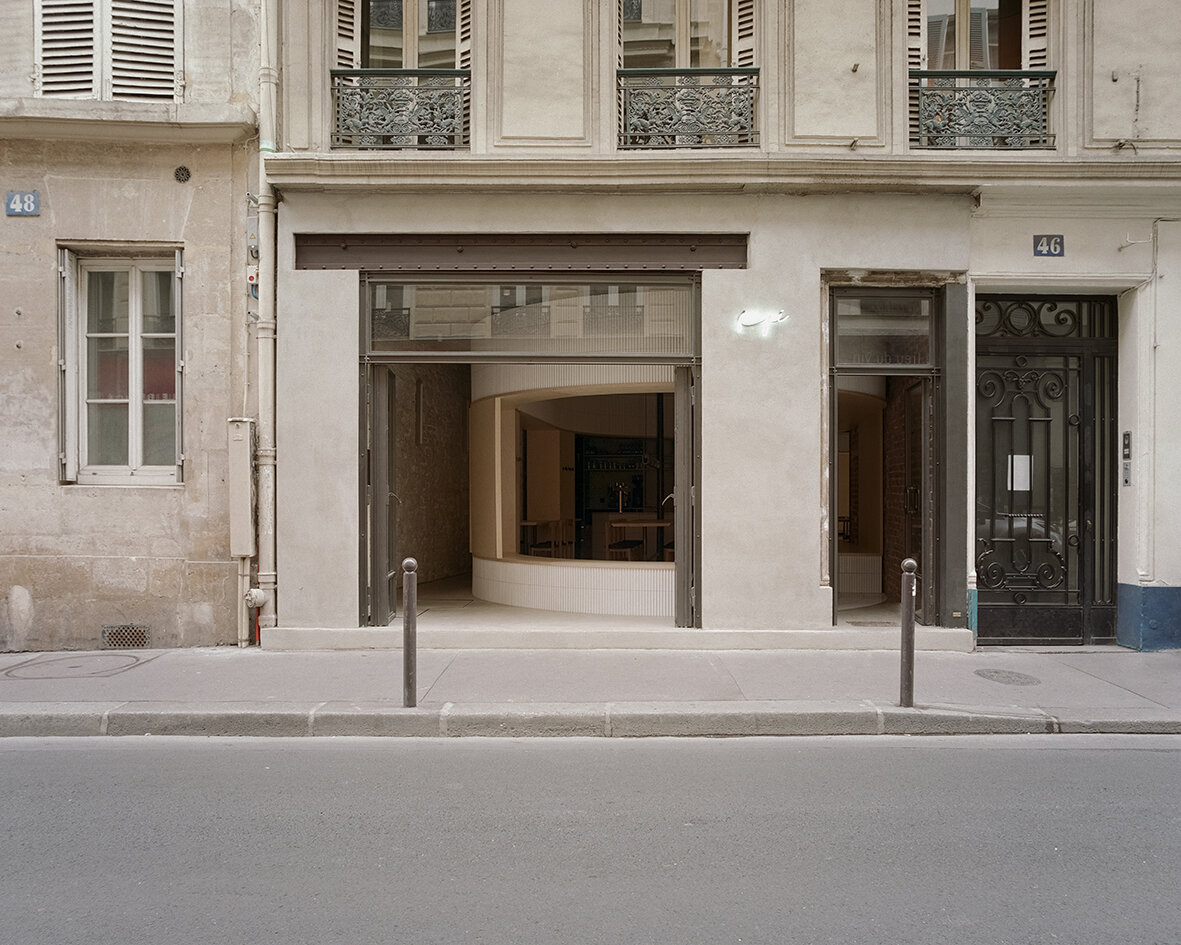
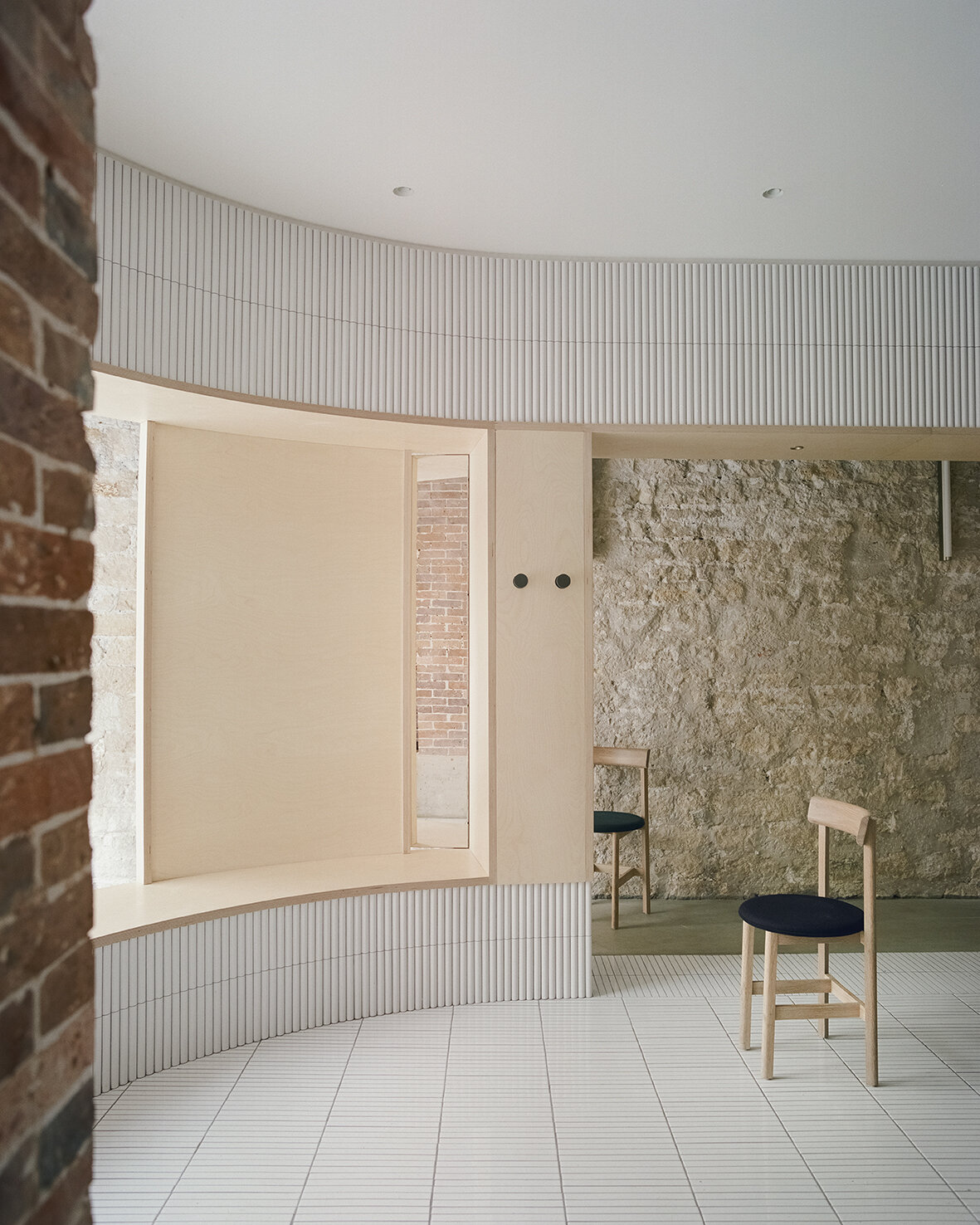
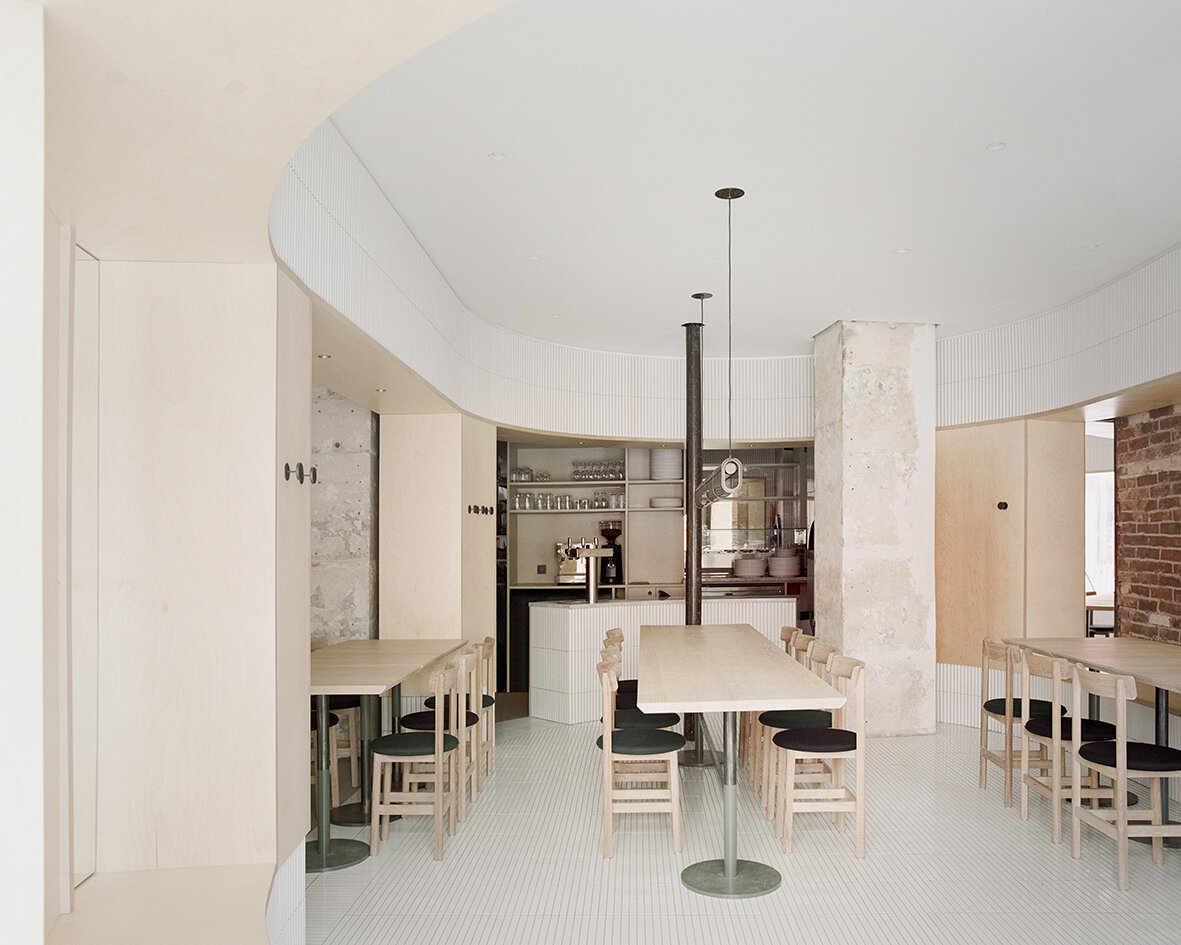
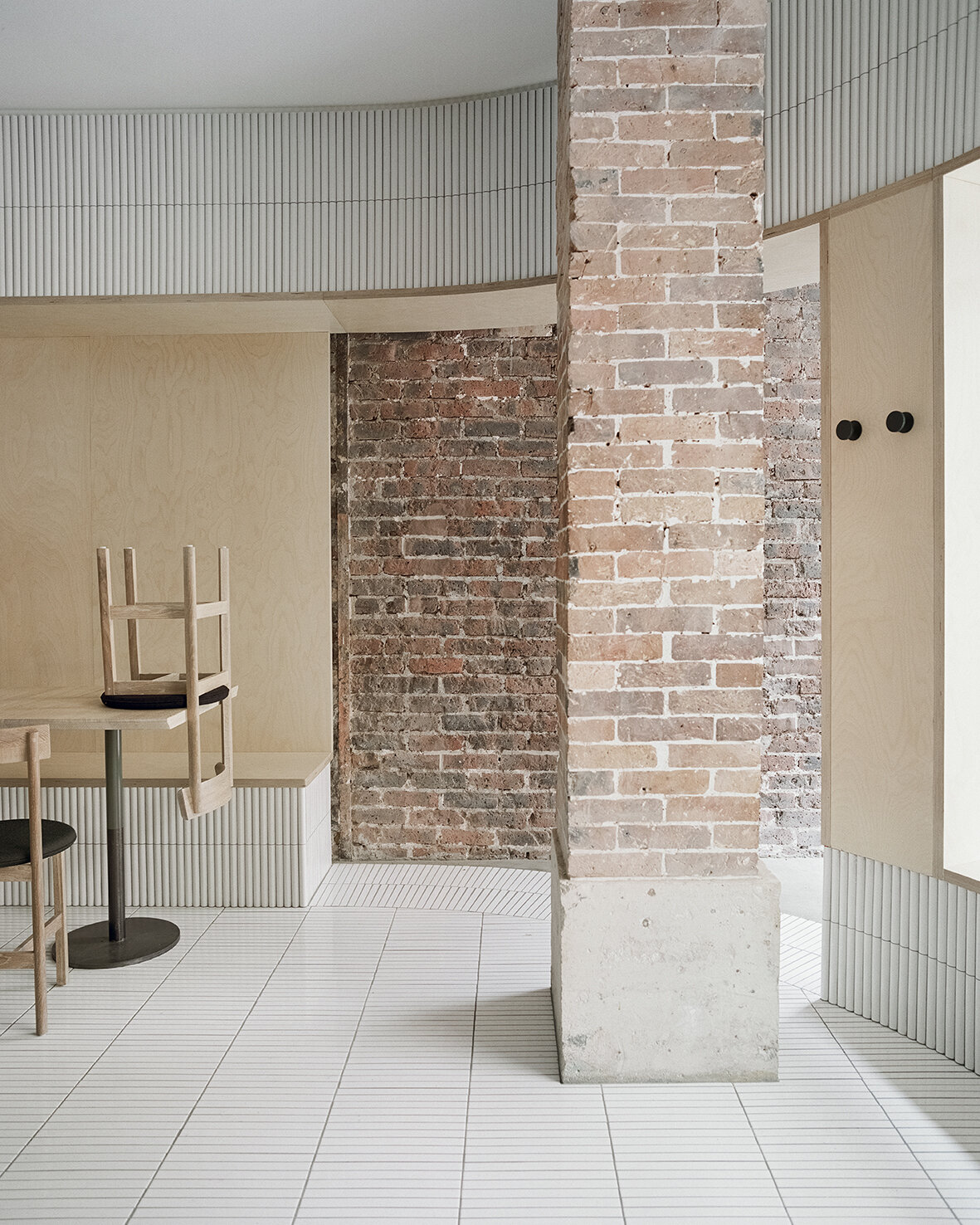

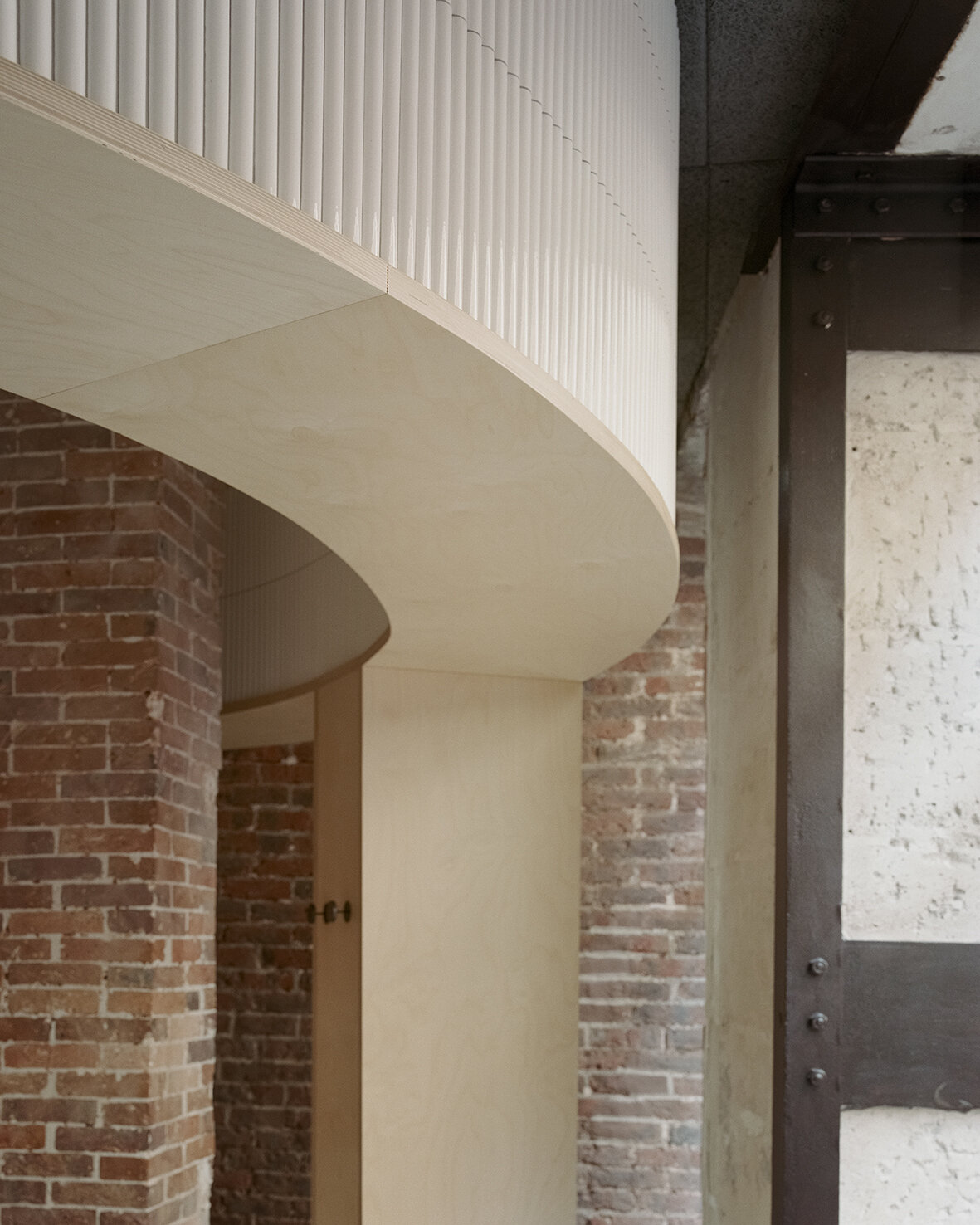
The new raw-steel-framed fully-operable glass façade maintains a visual continuity between the street and the venue and effectively extends the public realm into the interior. As guests enter the space through the main door, they see the clash of juxtaposing old and new materials, telling a story of sophistication with fresh textures of tile, glass and wood. Mirrors are placed strategically to create dynamic perspectives and voyeuristic moments between interior and exterior while inviting guests into cross gazes. The spatial and material strategies deployed to create a layered reading against the historical backdrop, offering guests a variety of experiences to explore within the space - moments of both public introversion and private extroversion.
Despite the compact 52 square meters of usable area, Neri&Hu’s asserts two figures into space: an oblong volume forming an arena-like enclosure that integrates all the functional needs of seating, display, chef’s preparation counter, privacy screen, as well as a round shape containing the wood-burning oven. Clad in handmade convex-curved white ceramic tiles, the enclosure features large openings framed with thick birch plywood that become seating benches for guests. Entering the arena, where the floor is adorned with narrow white ceramic tiles, guests are instantly transformed from spectators to performers on stage. The central communal table features a long custom pendant light above, while a series of lights by Viabizzuno create a stark modern contrast on the old limestone wall. Custom wood and fabric chairs, manufactured by De La Espada, are designed by Neri&Hu specifically for Papi Restaurant to fit within the limited footprint.
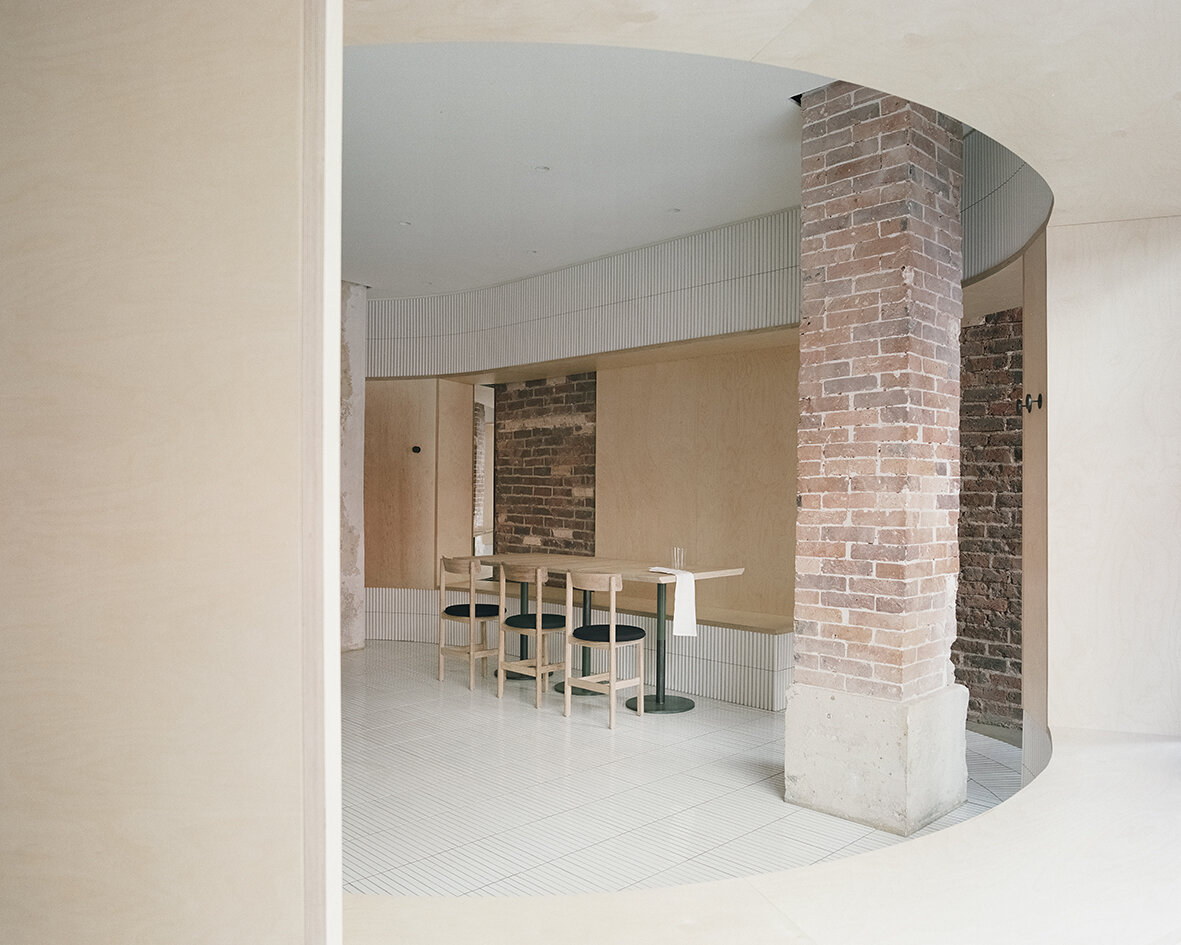

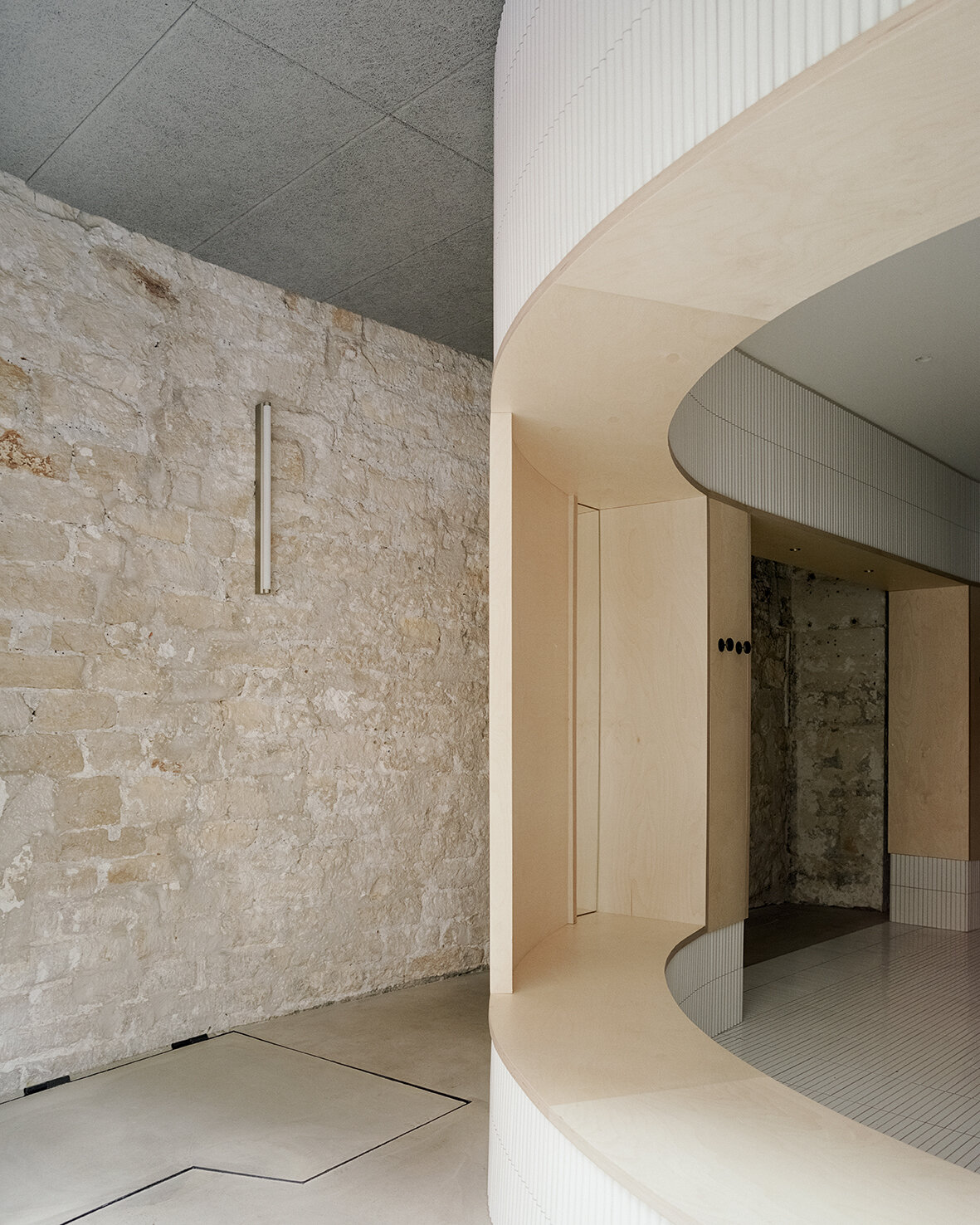
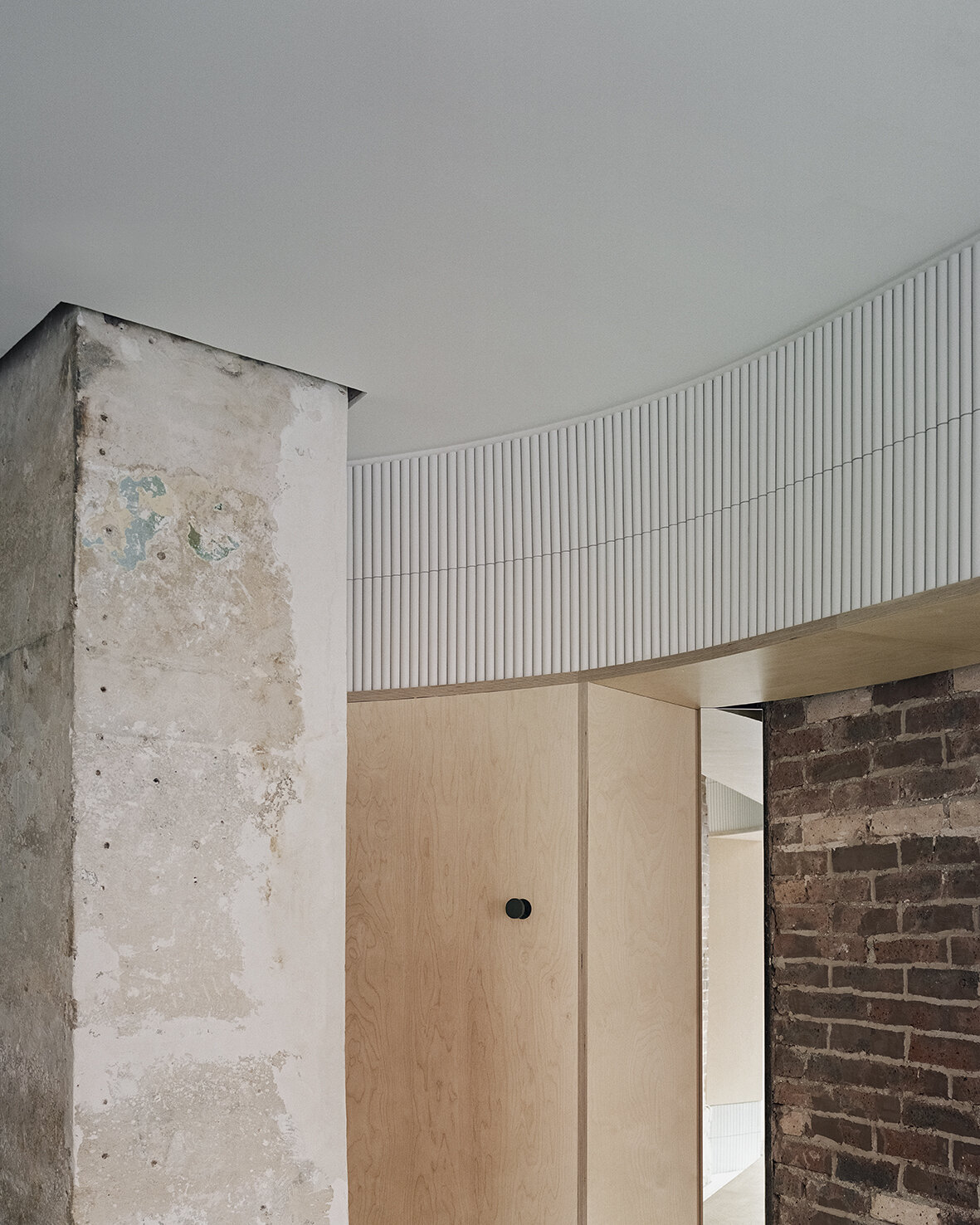
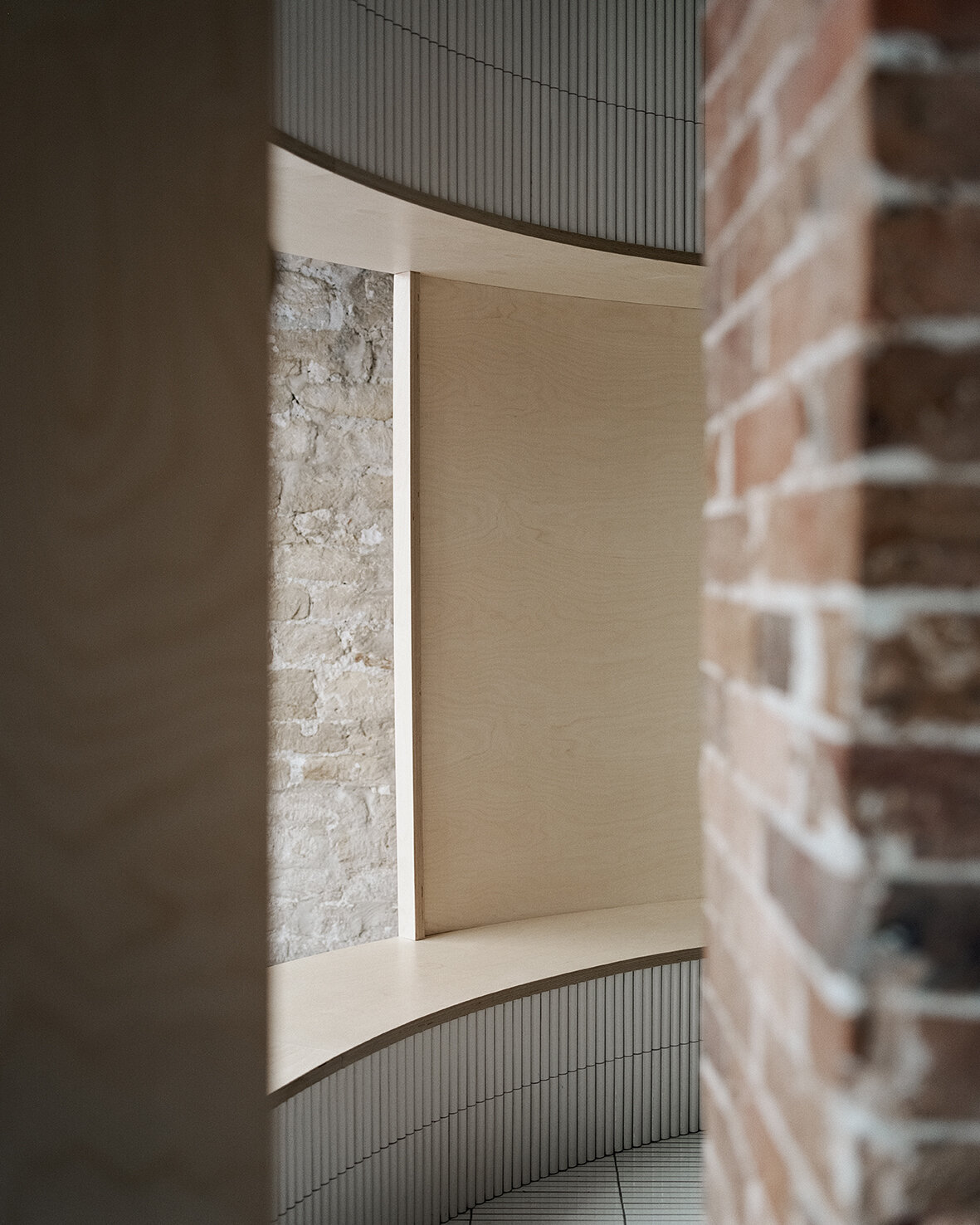
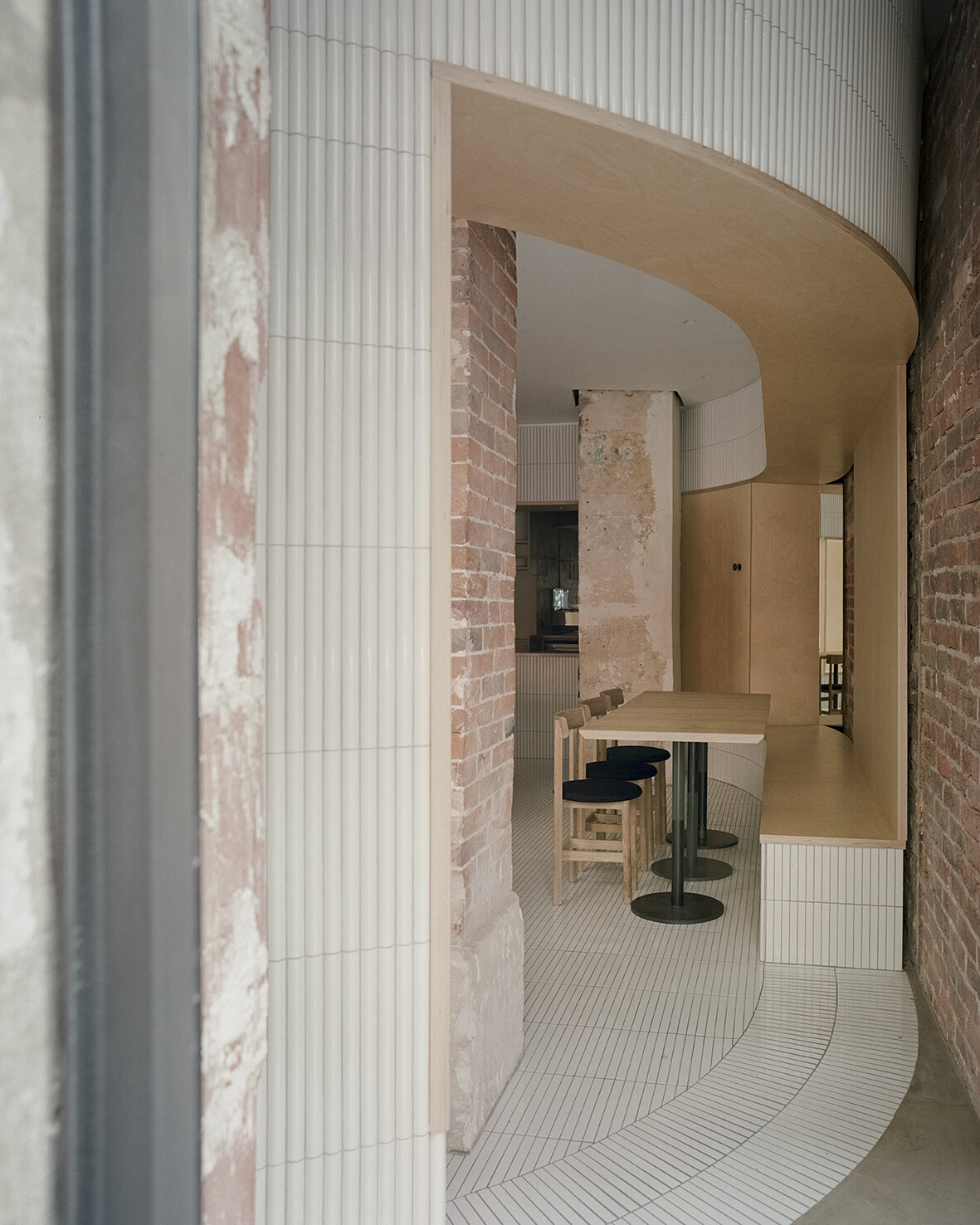
The story of “Sky, Earth, and Bounty”. Designed by JJ Acuna of JJ Acuna / Bespoke Studio
Interior architecture, designed by JJ Acuna of JJ Acuna / Bespoke Studio, takes inspiration from Chef Mingoo’s humbly crafted artisanal platings, building a concept narrative aligned with the Chef’s craftsmanship and focused on the story of “Sky, Earth, and Bounty”.
Hansik Goo is Hong Kong’s newest fine-dining destination. At the helm is Korea’s Award-Winning, Chef Mingoo Kang, of Seoul’s famed Mingles restaurant. The name Hansik Goo is a play on words that can refer to both “a family that shares meals together” and “Korean cuisine by Chef Mingoo”. In collaboration with ZS Hospitality, Hansik Goo introduces the heart and soul of Contemporary Korea today with tasting menus authentically Korean but with inventively playful twists, elevating flavours in a refined and nuanced way using ingredients sourced locally and from Korea.
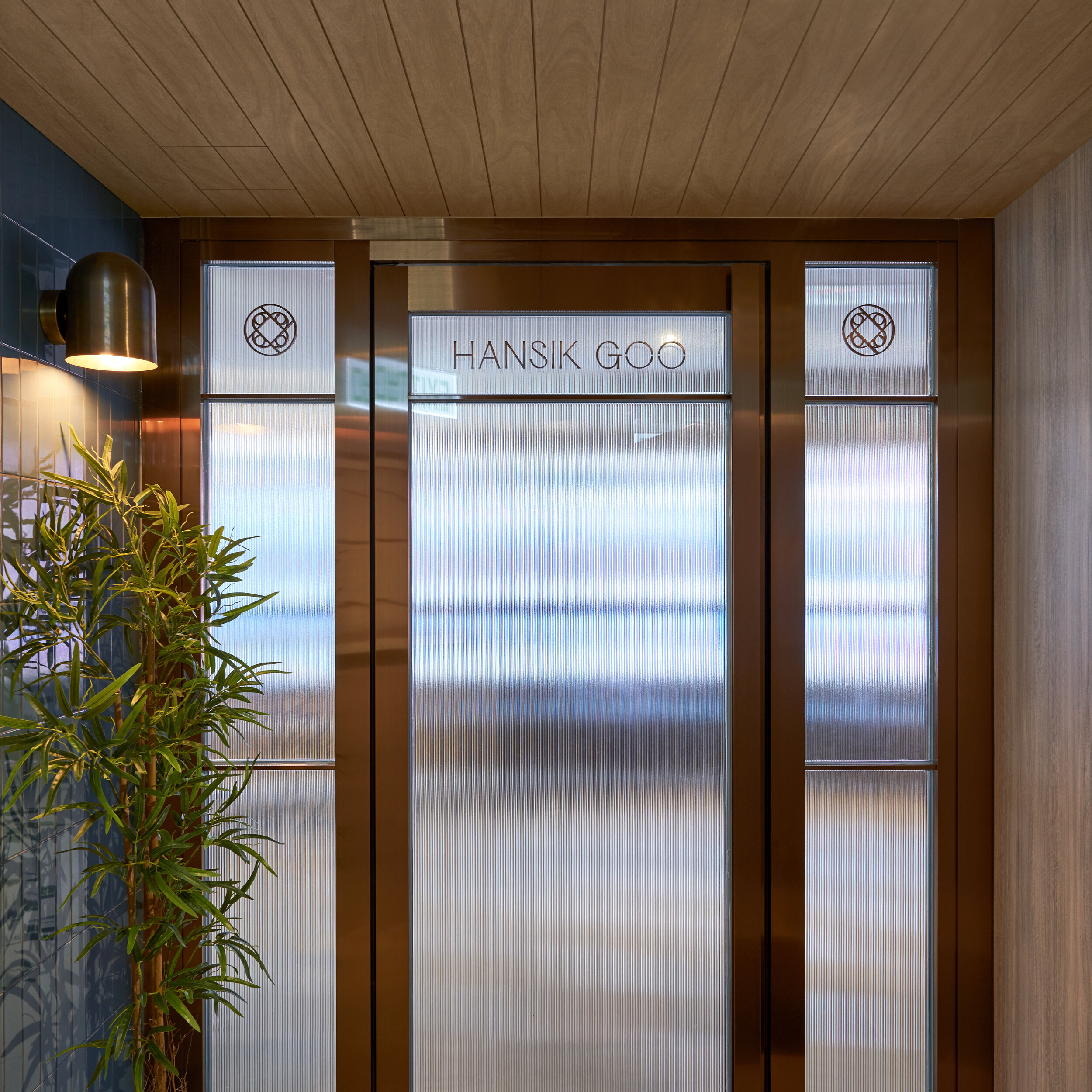
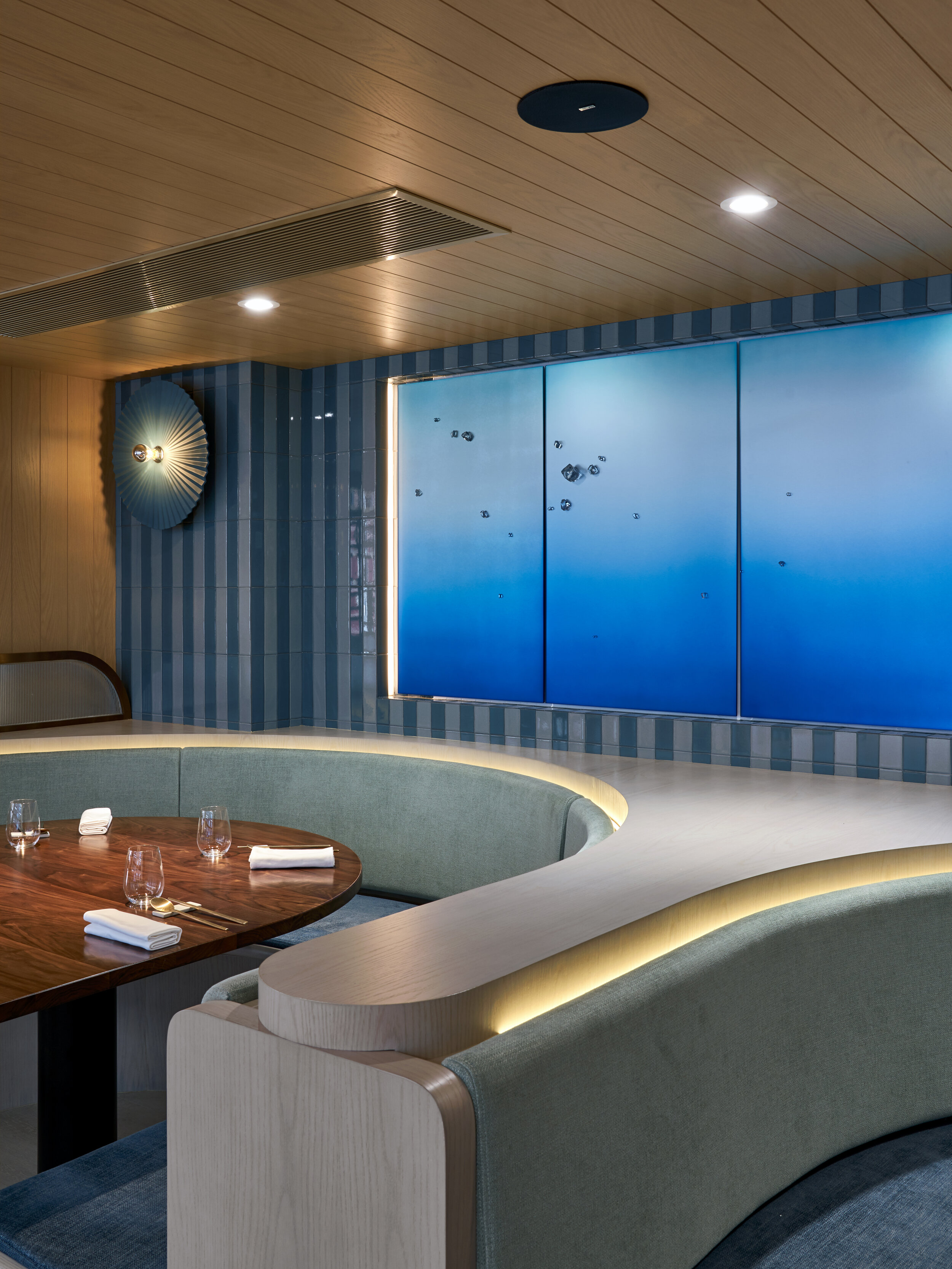
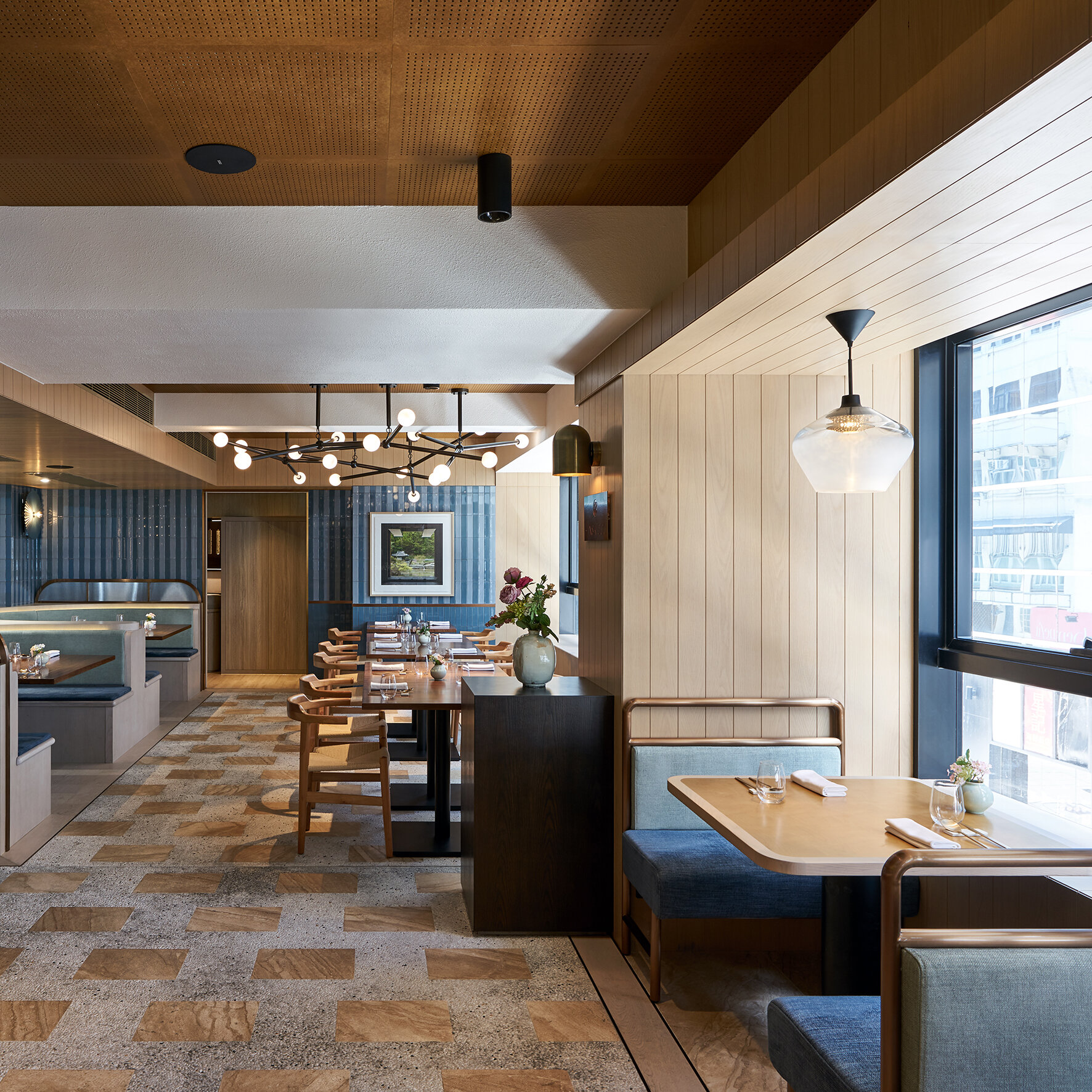
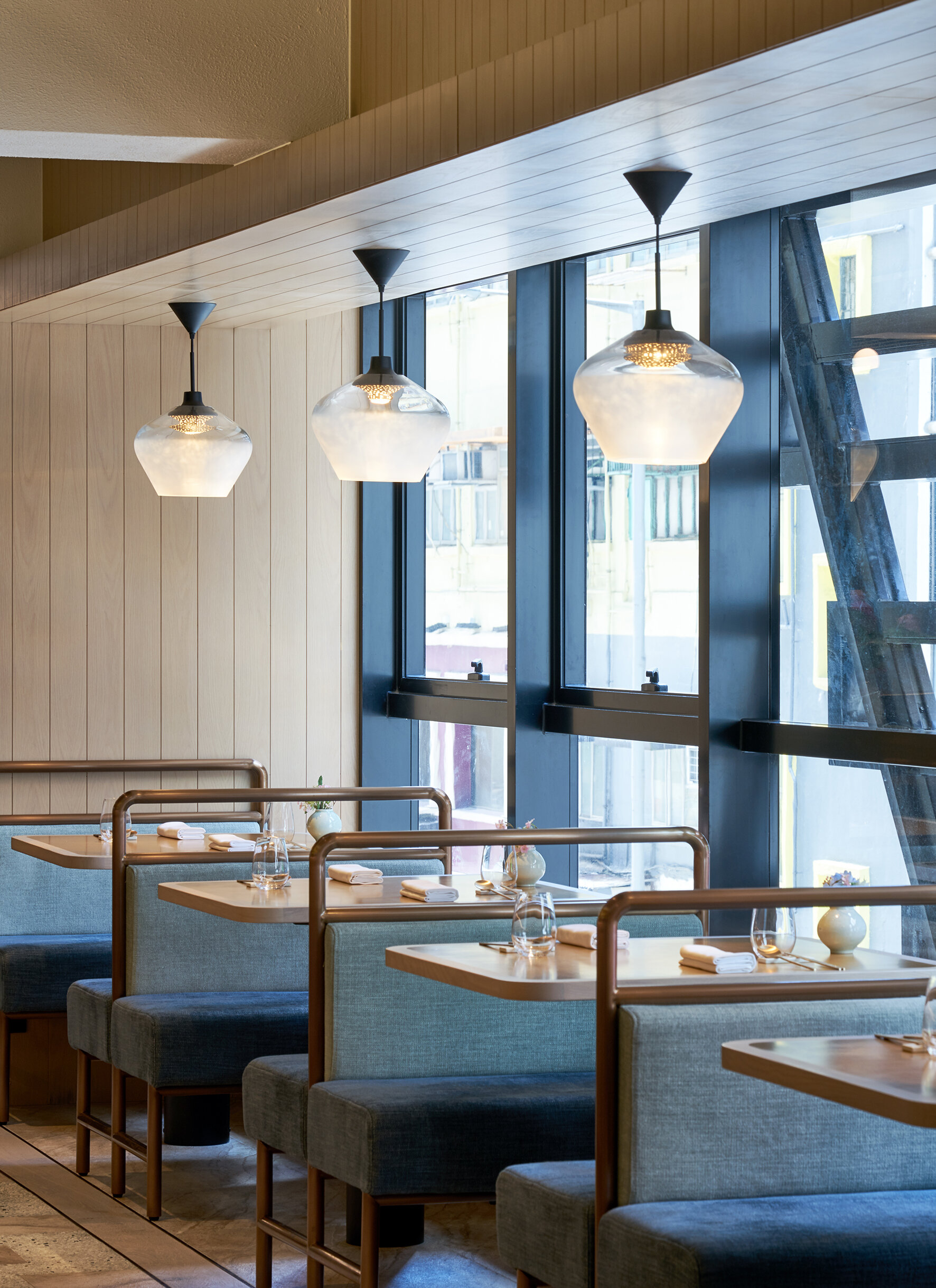
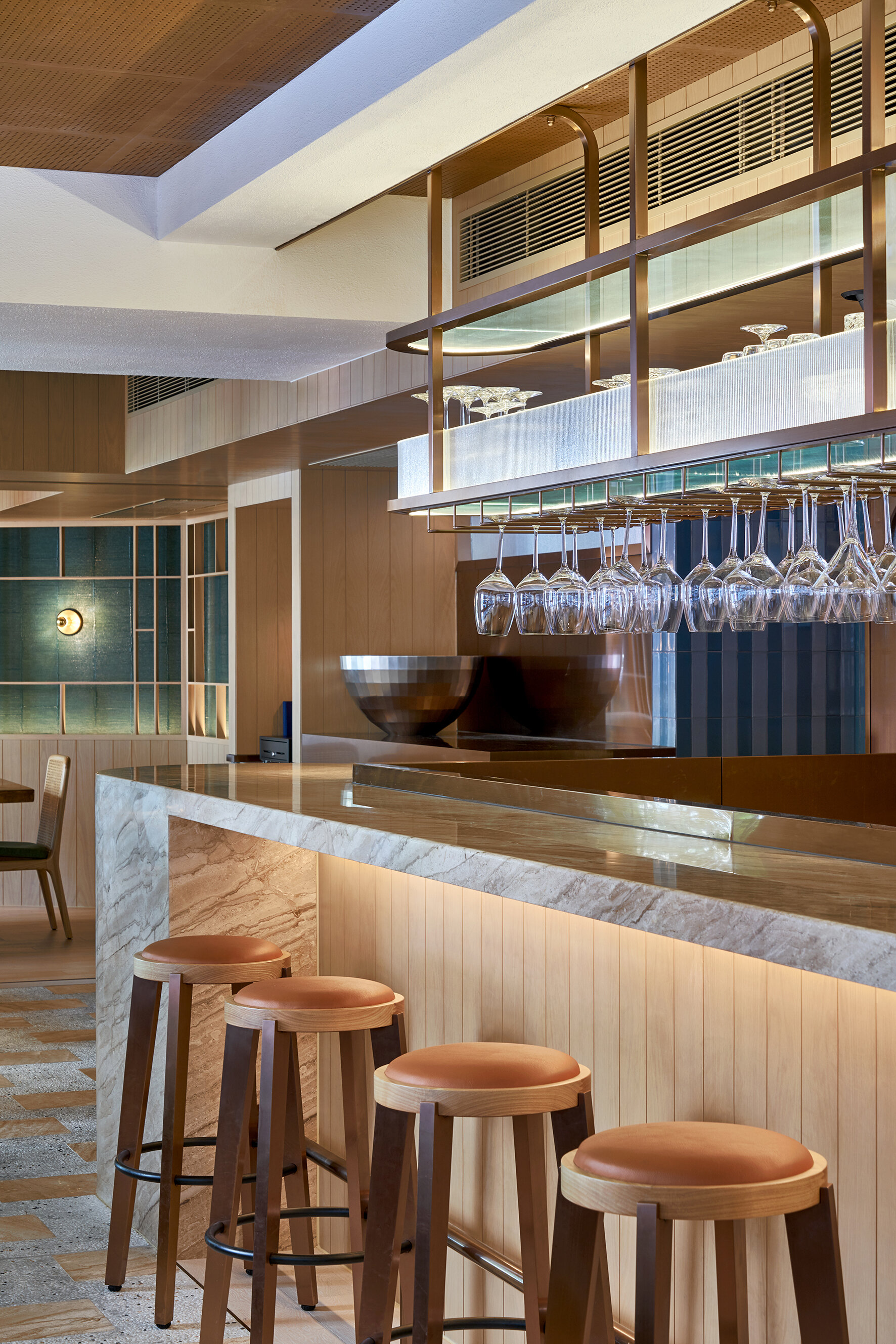
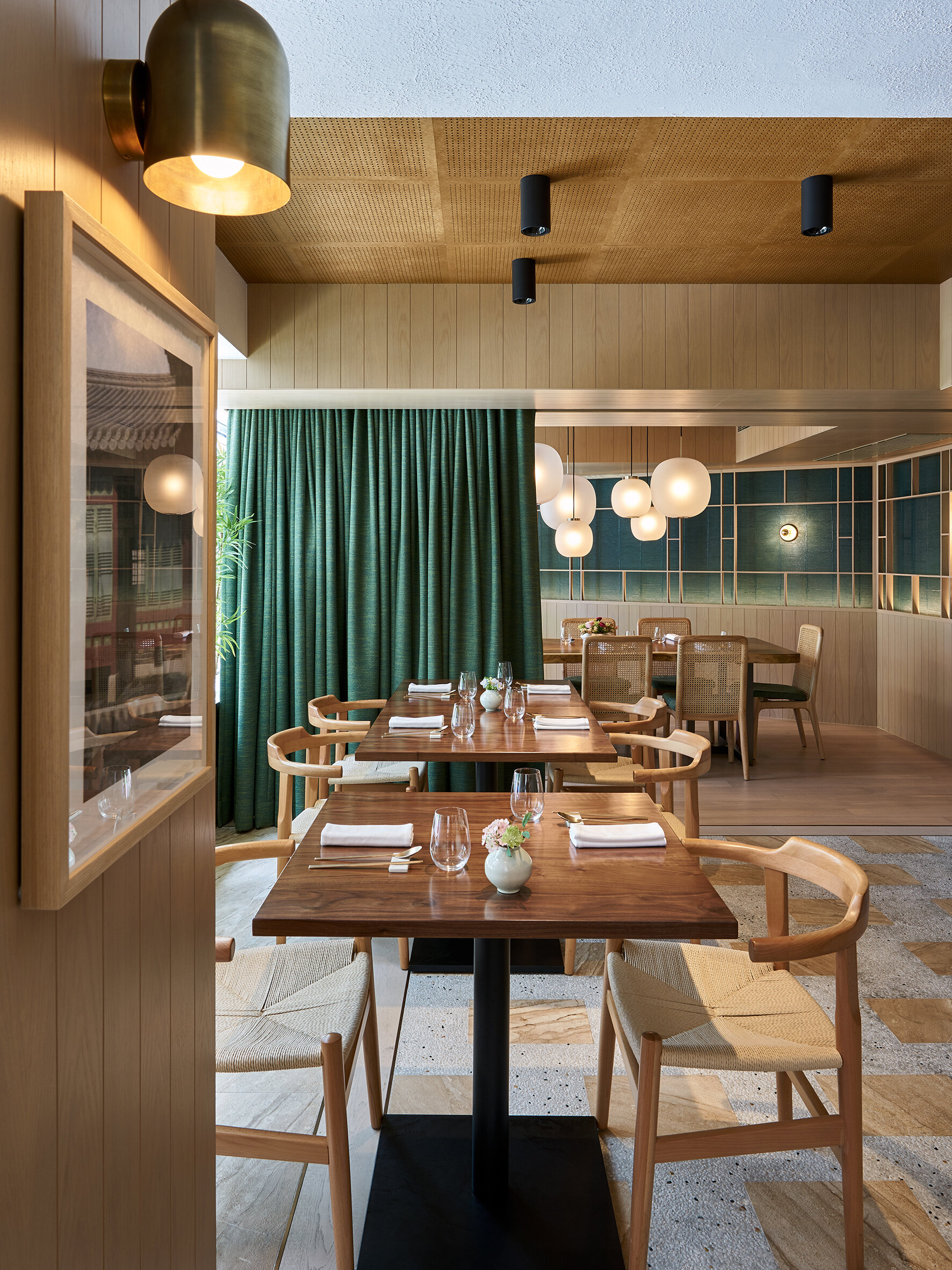
Interior architecture, designed by JJ Acuna of JJ Acuna / Bespoke Studio, takes inspiration from Chef Mingoo’s humbly crafted artisanal platings, building a concept narrative aligned with the Chef’s craftsmanship and focused on the story of “Sky, Earth, and Bounty”. The 2,200 sq.ft. Space is separated into three zones; the Sky Zone in the Main Dining Room design in various shades of blue, the Earth Zone at the Drinks Bar clad in copper metal, and finally the Bounty Zone defined by the Chef’s Private Room table in natural walnut with touches of forest green and birch finishes on walls and soft surfaces.
To create a space of warmth, Korean species of Oak and Birch give the space ease and softness, while hand-crafted glazed ceramic tiles make a glossy contemporary finish. The designers also take inspiration from Seouls’ ancient Bukchon Hanok Villages, a neighbourhood from the 14th Century with preserved traditional Korean architecture. The private room’s vertical surfaces are framed by geometry inspired by the Hanok, while the main dining room floor utilizes a uniquely staggered floor pattern made of sliced white limestone and poured-in-situ terrazzo- reminiscent of peripheral stone and concrete walls protecting these Hanok homes
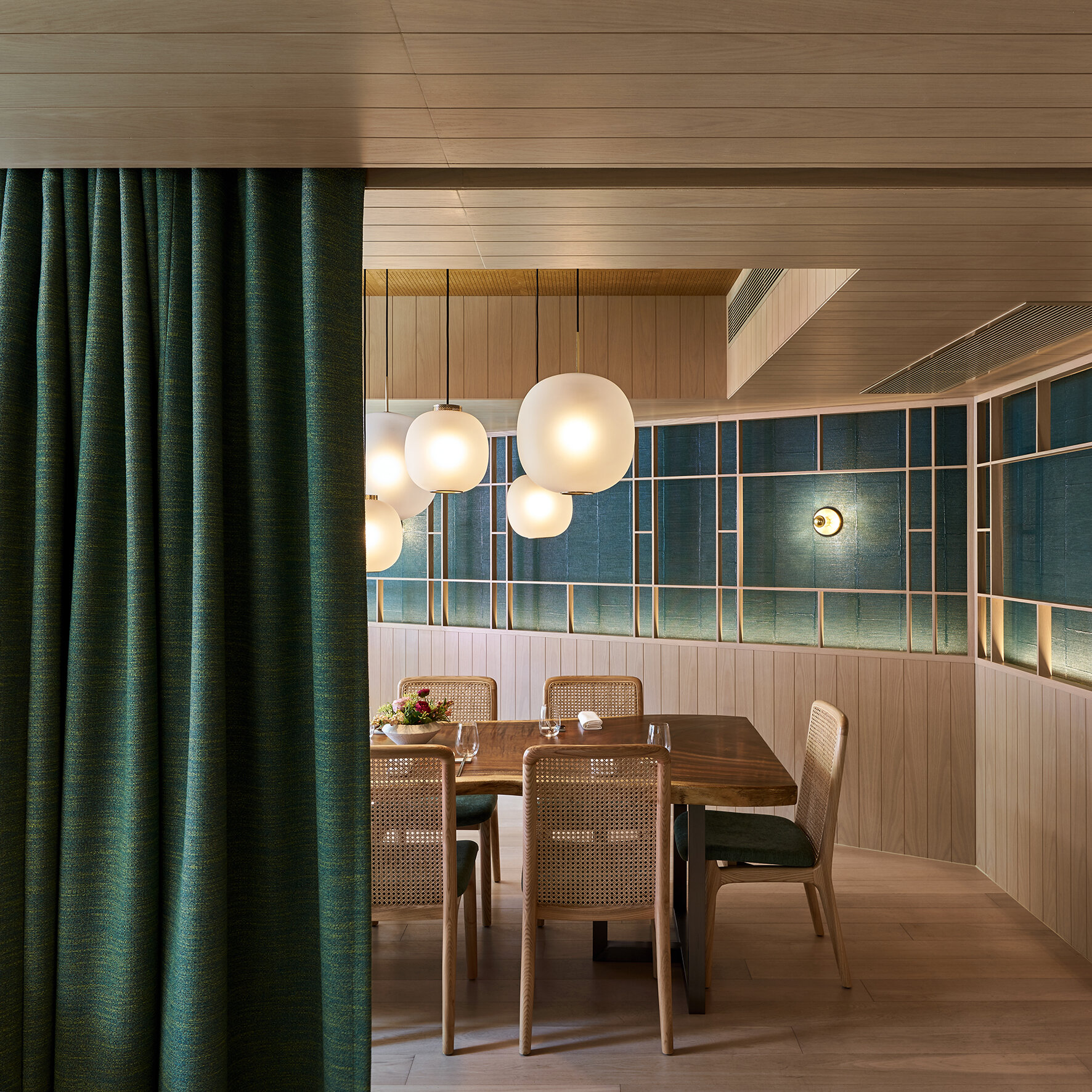
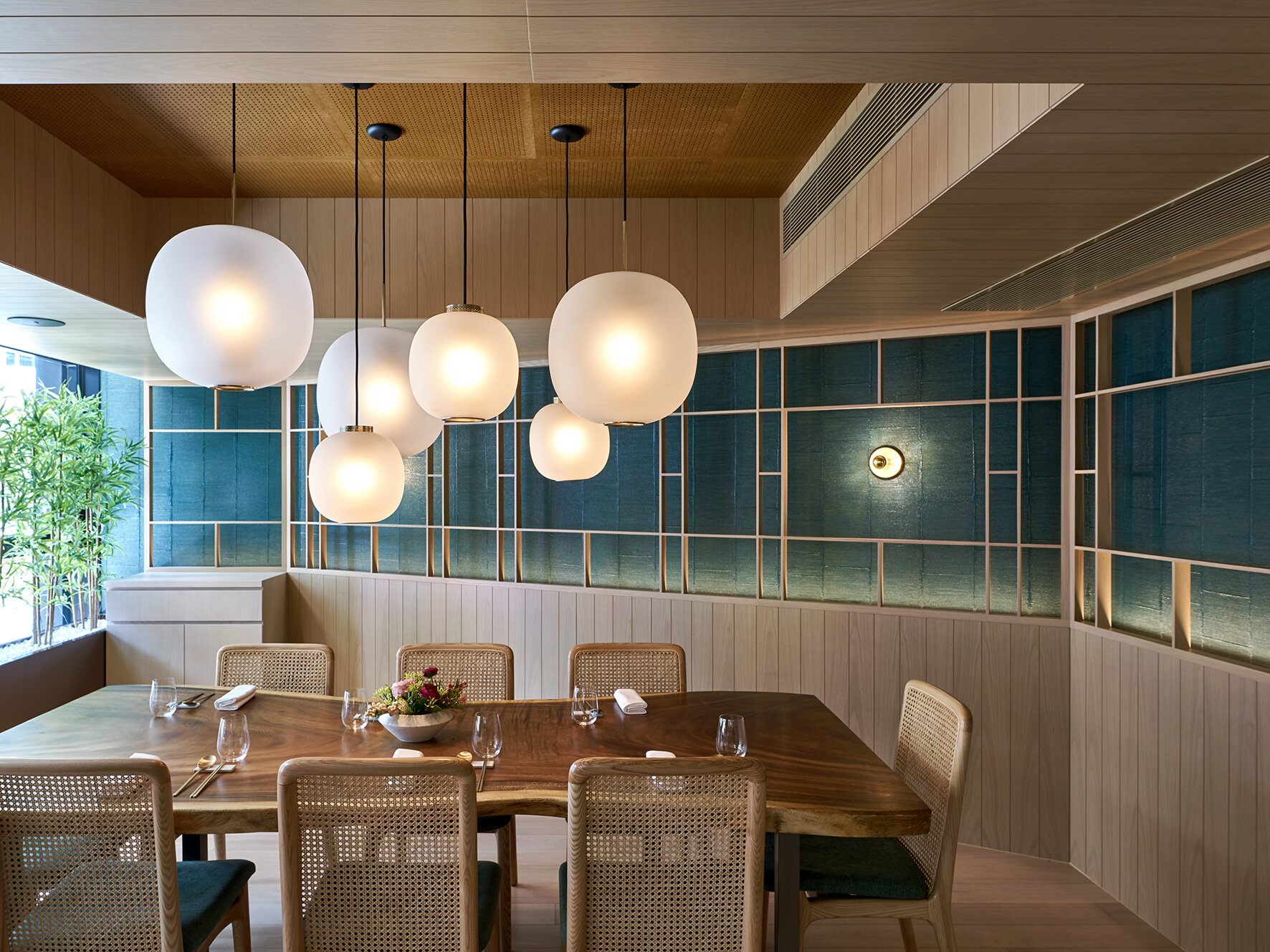
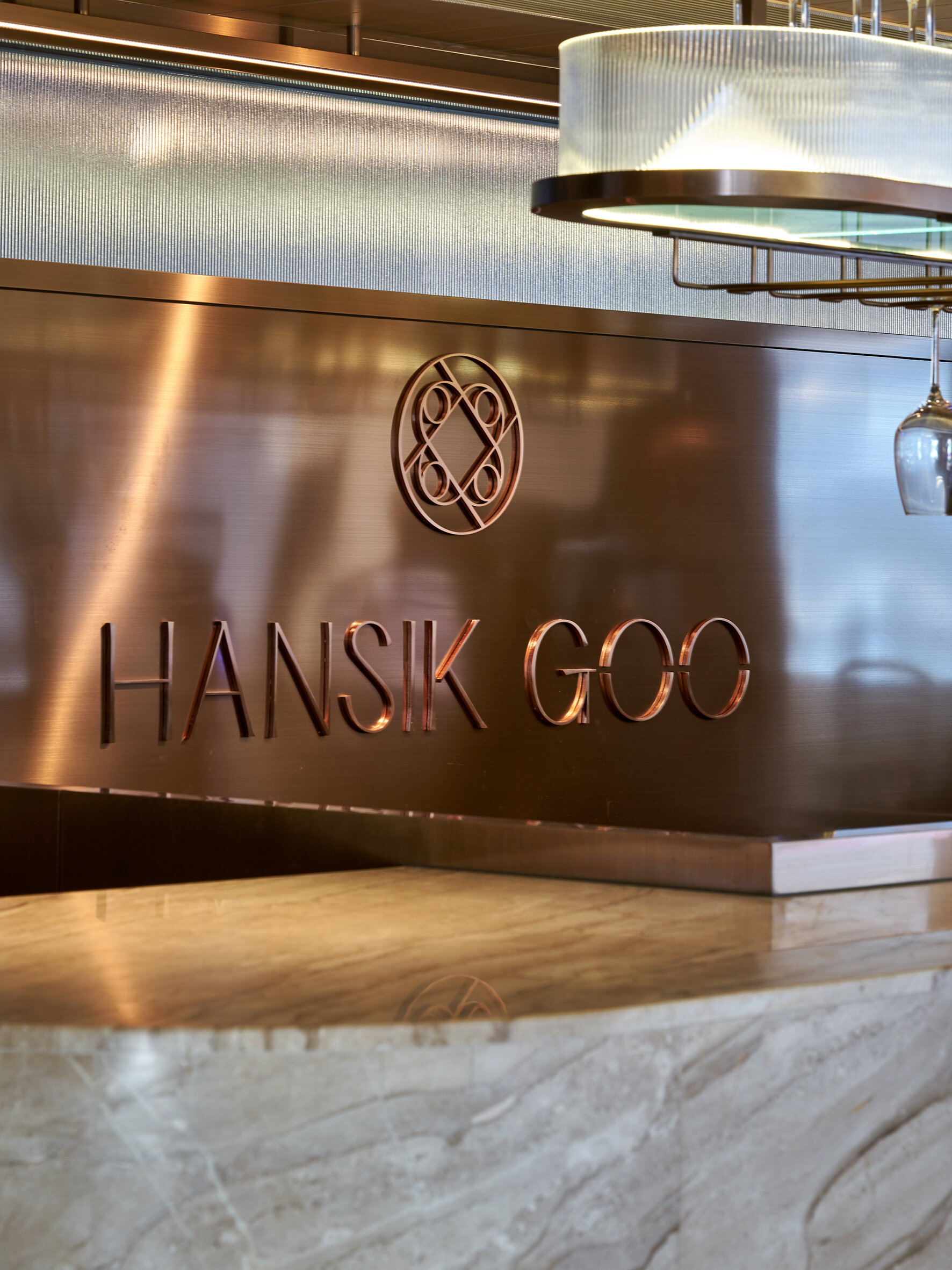
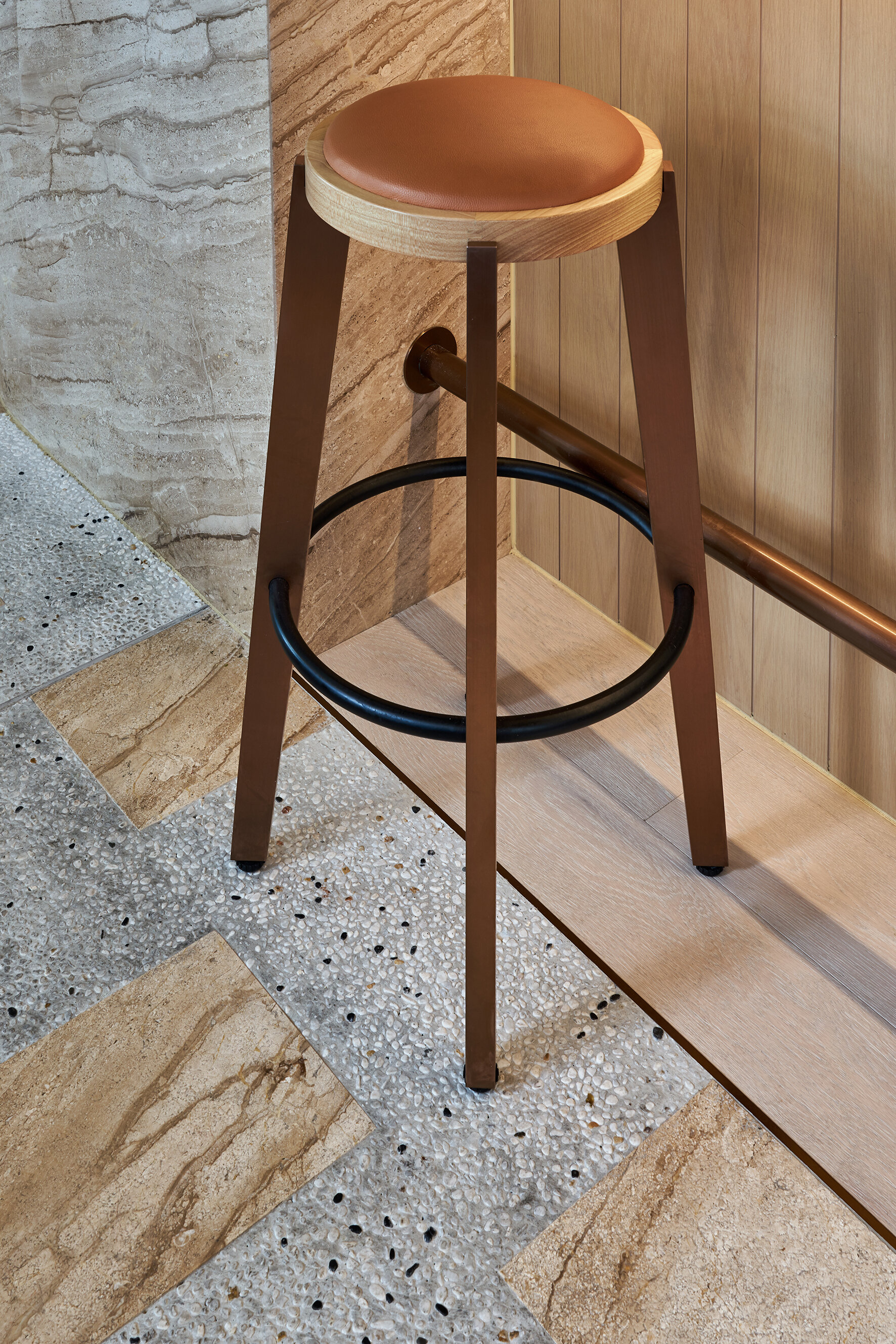
In addition to the restaurant’s materials and finishes, uniquely bespoke artworks in collaboration with contemporary Korean artists were curated and placed carefully throughout the space. In the Sky Room- a 5-panel luminescent panoramique of Acid Etched Mirror and Laminated Glass, titled “Breathing of Light 20MA01 (2020)” by artist Lee Kyouhong was made specifically to respond to the design narrative of Sky. Three beautiful prints of Hanok homes, gardens, and landscapes by photographer, Kim Heewon, adorn all three zones of the restaurant. Other collaborations include sculptural work by Chung Yongjin, Kim Woo Young and Kim Yong Ho.
ALL Photographs taken by XU Liang Leon. Design by JJ Acuna / Bespoke Studio. All photographs are copyright of JJ Acuna / Bespoke Studio.
For more information, please visit JJ Acuna / Bespoke Studio.

